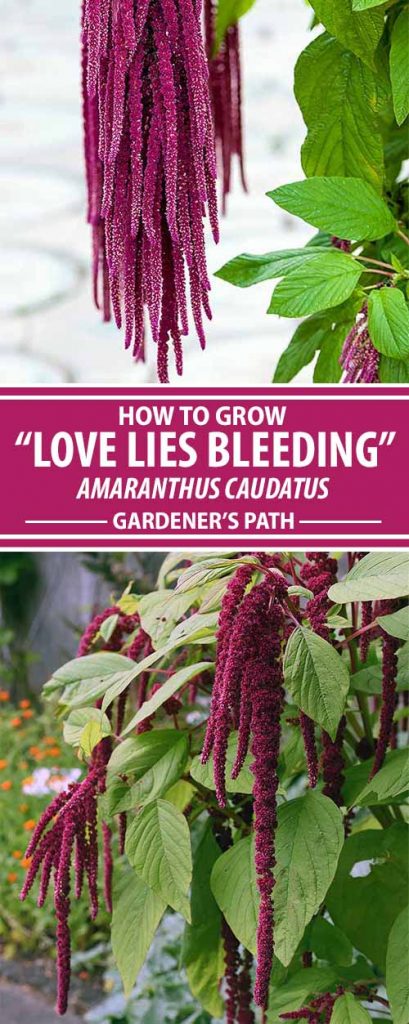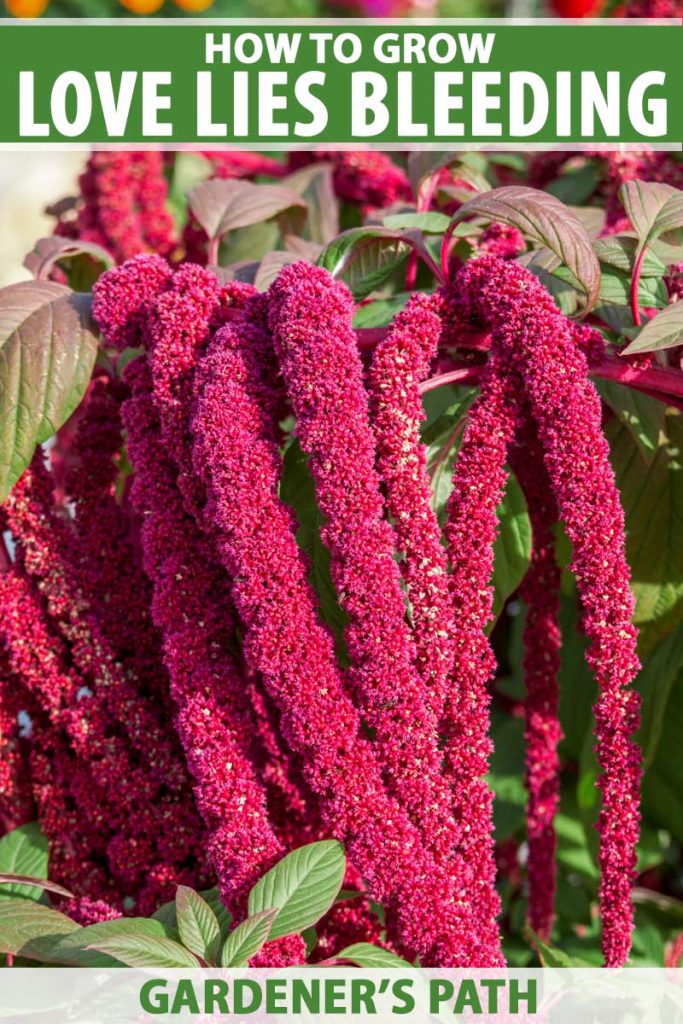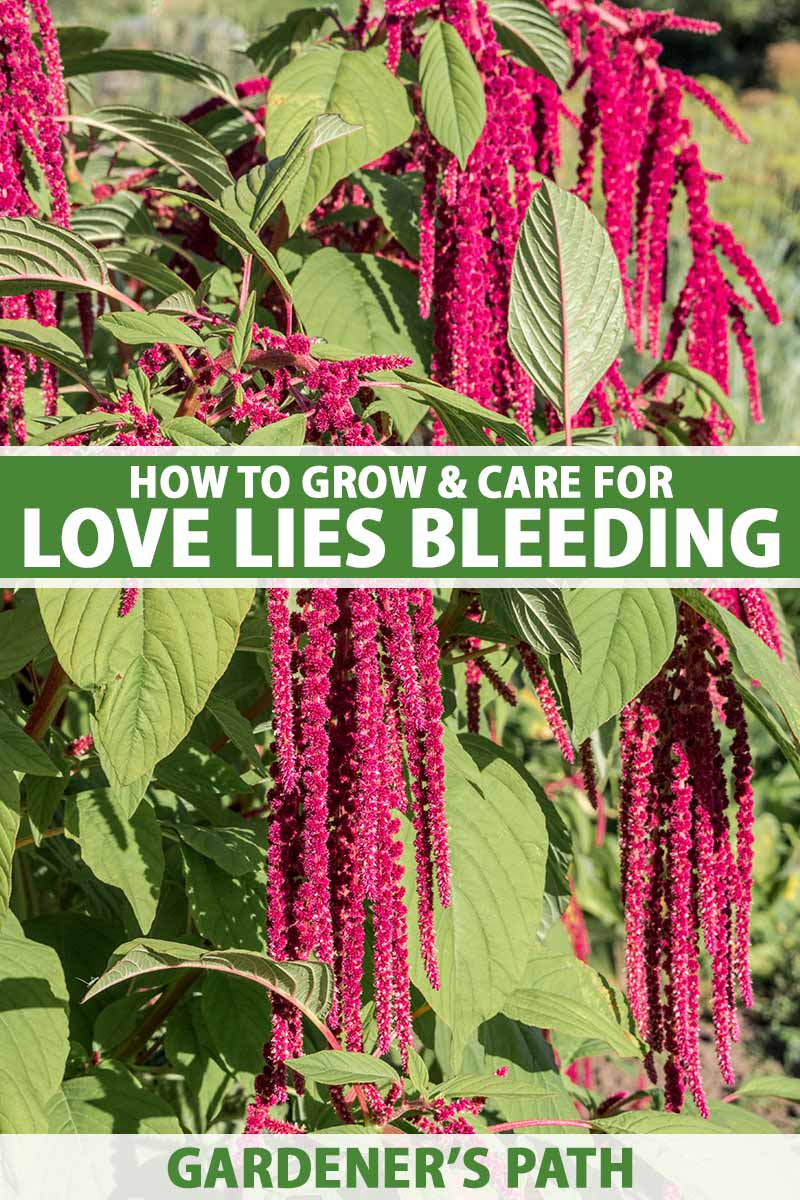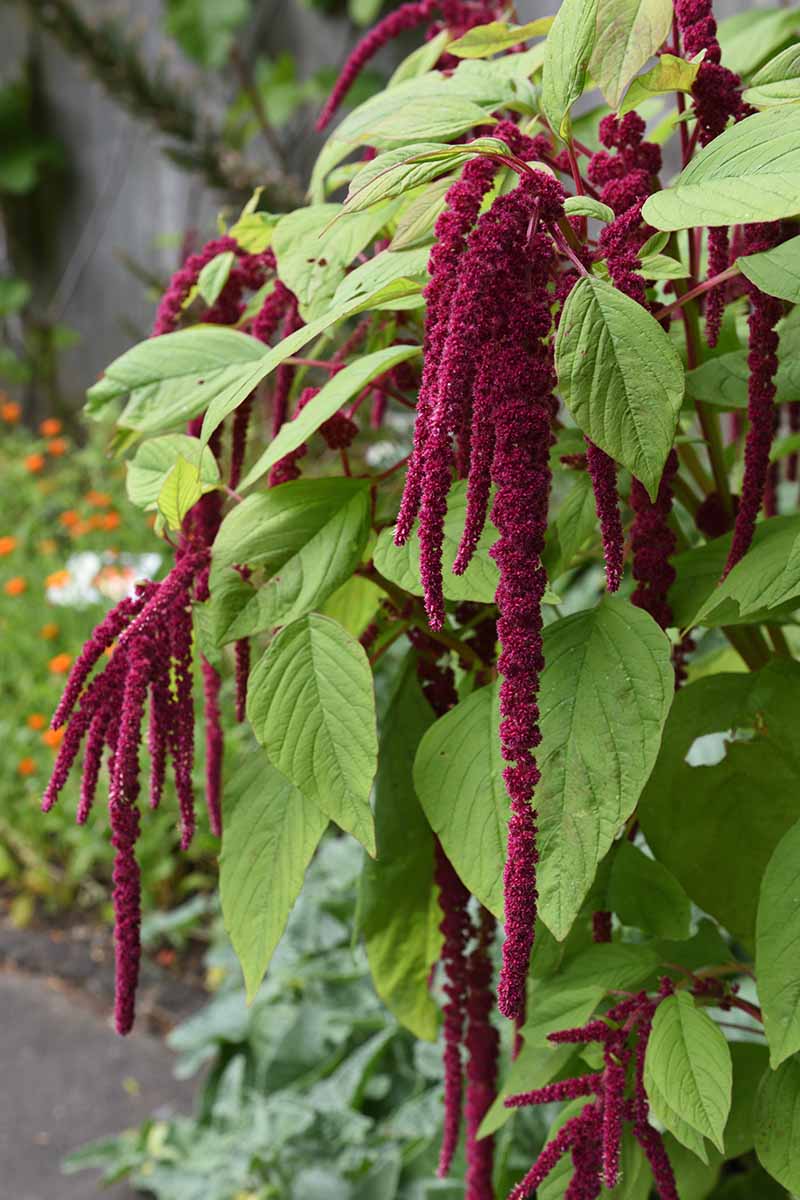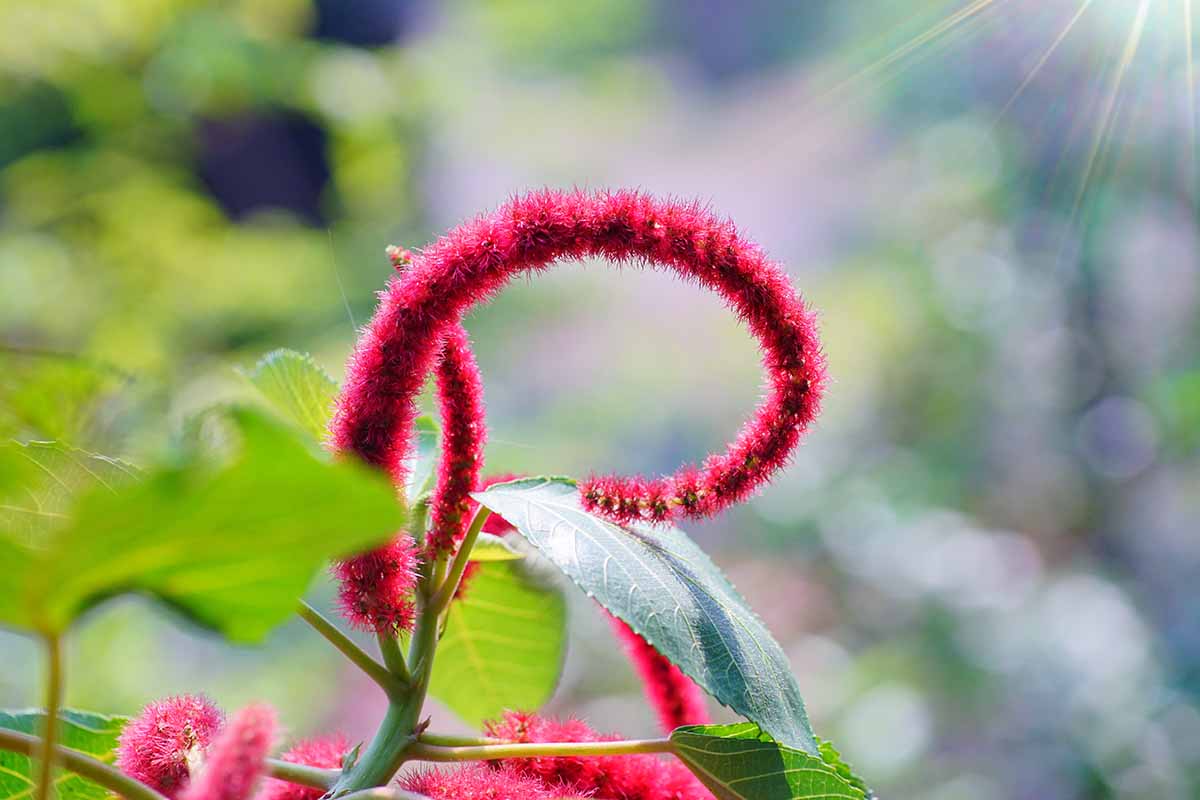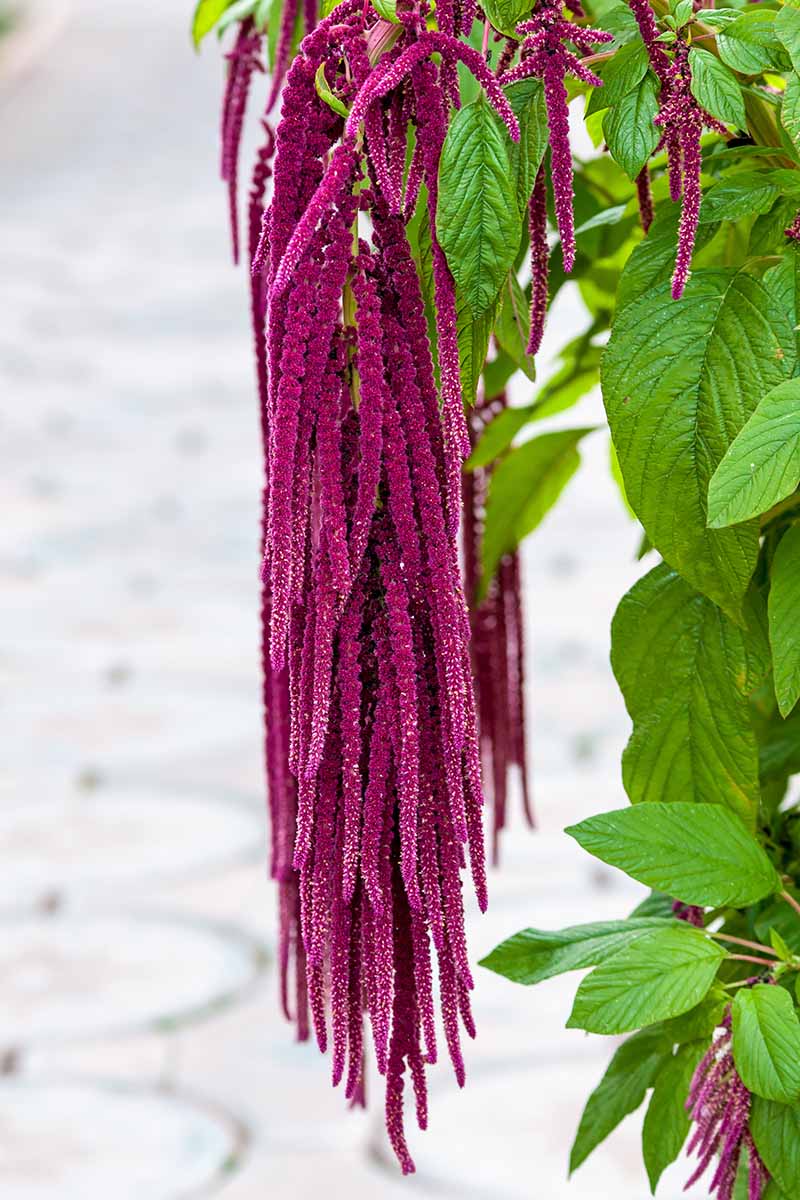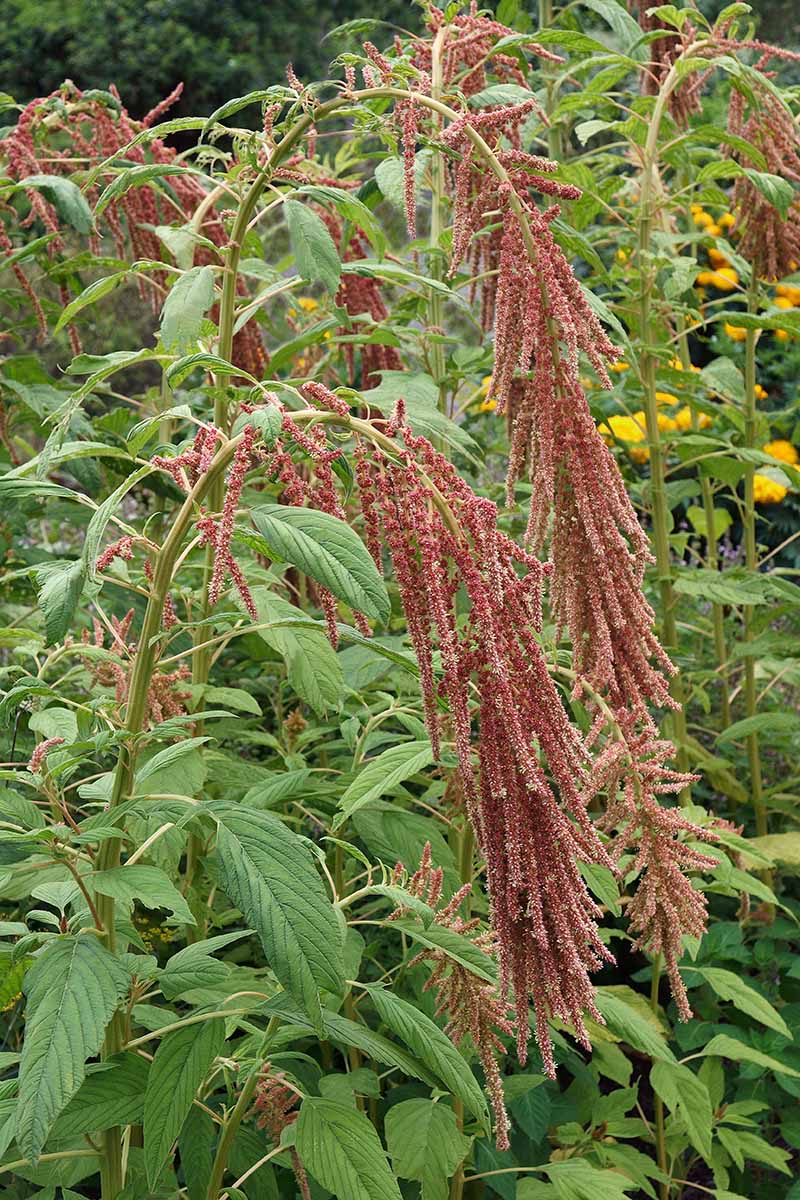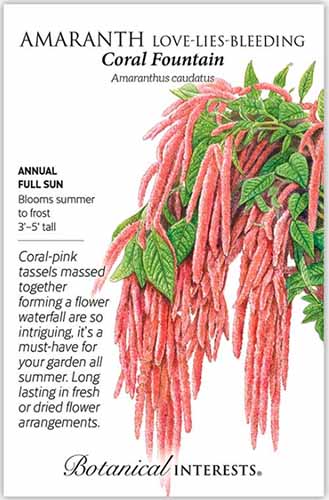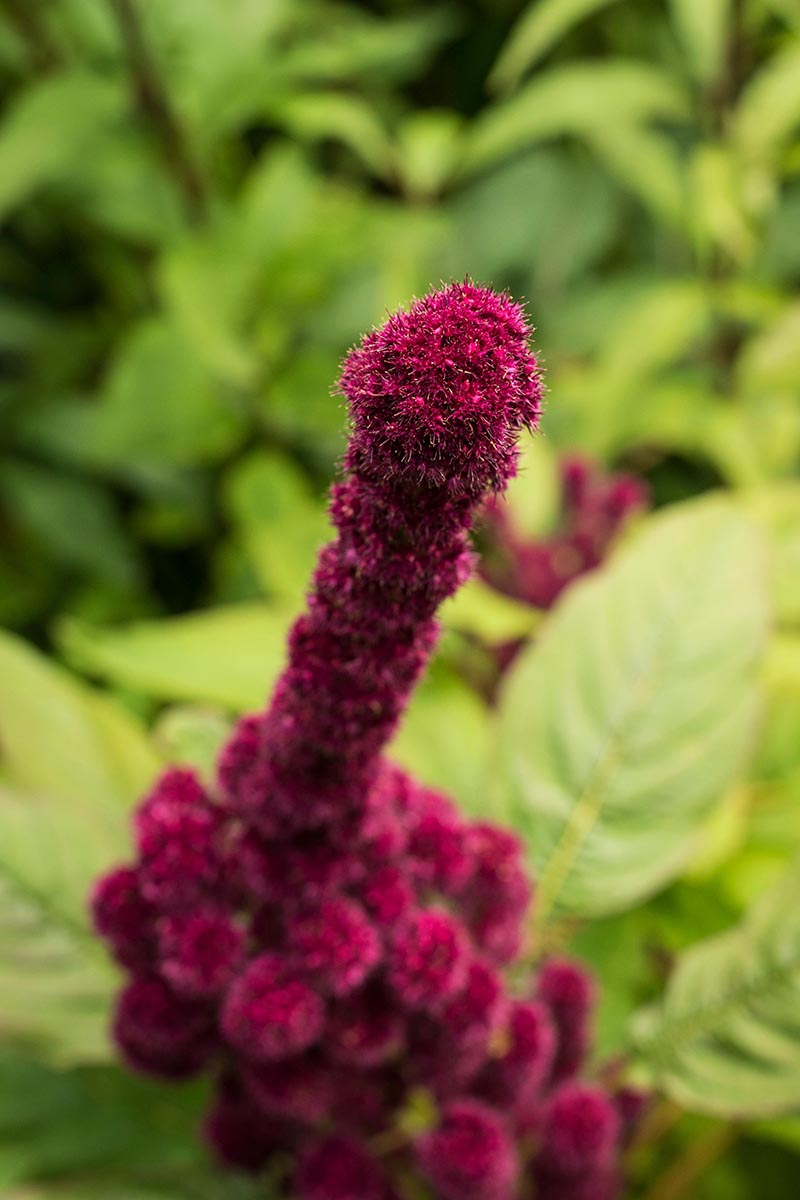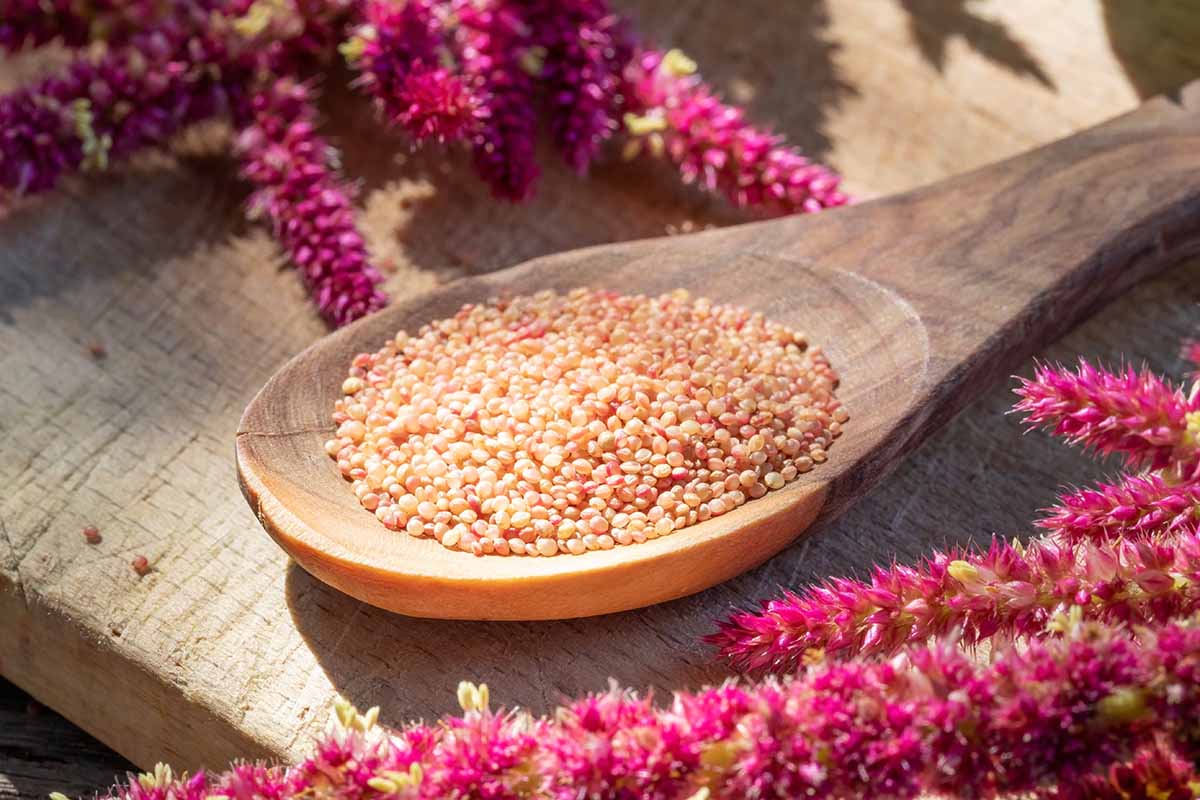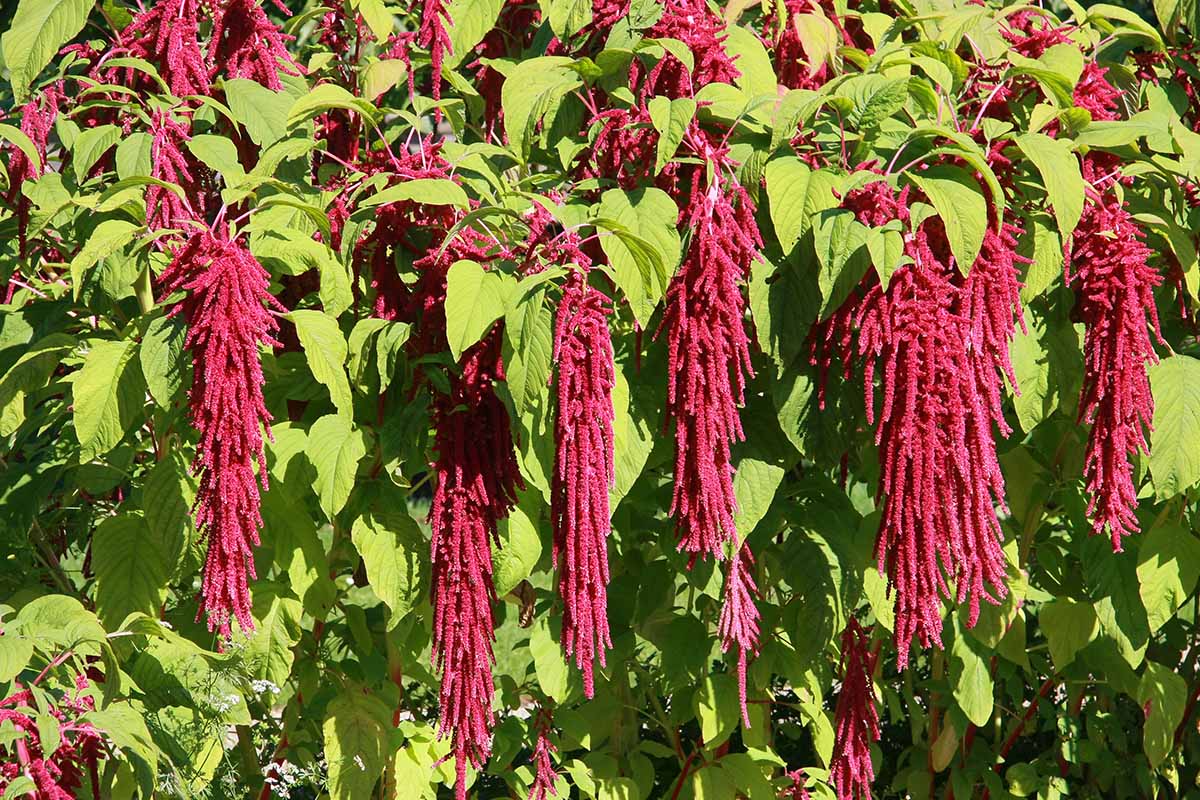A type of grain, it is one of over 60 species in the Amaranthus genus of the Amaranthaceae family. In the home garden, it is grown primarily as an ornamental specimen. We link to vendors to help you find relevant products. If you buy from one of our links, we may earn a commission. Cultivated varieties expand the color palette to include additional shades of red and green. This article provides all you need to know to grow love lies bleeding at your house. Here’s what we’ll cover: Let’s get started.
Cultivation and History
The botanical name, Amaranthus caudatus, derives from the Greek amarantos or never-fading, and the Latin caudatus or tailed. The gruesome name, love lies bleeding, may date to the Victorian era and the advent of a romantic language of flowers that permitted discreet expressions of love and its many emotions. Also known as tassel flower or foxtail amaranth, the species is a gluten-free grain. It is often referred to as a “pseudo-cereal” and featured as an alternative to mainstream wheat, oats, and corn. Both the seeds and leaves of our subject plant are edible, but there is one key point to note: When A. caudatus is grown in nitrogen-rich soil, a condition often created by chemical fertilization, the leaves become high in nitrates that may be carcinogenic if consumed. As this may include lawn fertilizer run-off, you may want to consider cultivating your plants in a container or raised bed if you wish to consume the leaves. Nitrogen is a volatile element that is hard to measure in the soil, even with a soil test. Therefore, we stress that if you consume your plants, you should grow them organically. You may find photos and information on this type of amaranth that refer to it by its Quechua names, “kiwicha” and “quihuicha.” These names date to its ancient origins in the tropical Andes Mountains of South America, where Mt. Kiwicha is located. Evidence of the existence of amaranth dates back 7,000 to 8,000 years, and archeological records suggest that 6,000 years ago it was a domesticated grain crop. Ancient uses included cooking and medicinal applications for various conditions, including fungal infections, and pulmonary and urinary disorders. Today, love lies bleeding enjoys popularity as an ornamental plant. Once established, the species has an above-average tolerance for drought and salt. Plants characteristically have an upright, bushy growth habit. They achieve mature dimensions of two to five feet tall and one to two feet wide. As they mature, hundreds of tiny petal-less blooms cluster in tassels suspended dramatically among ample light-green to pink-tinged green foliage. And while some beneficial pollinators, like honeybees, are not attracted to the extremely small blooms, you may see other bees and a few hummingbirds. And at season’s end, the seeds are a feast for foraging songbirds. Flower “tails” retain their color for six to eight weeks and share similar cultural requirements with fellow Amaranthaceae family members celosia, cockscomb, and gomphrena. They add texture and vertical interest to cut flower vases and “everlasting” dry arrangements, although they don’t actually last forever. A. caudatus self-sows liberally, even earning itself “weed” status in the eyes of gardeners in warmer regions where plants may come up year after year. Some wild Amaranthus species can be quite a nuisance in farmers’ fields. One in particular, redroot pigweed, A. retroflexus, is referred to as a “major agricultural weed” in North Dakota. Ironically, pigweed is toxic to pigs. Let’s explore how to start a plant.
Propagation
There are two ways to get started: by sowing seeds or transplanting nursery plants. Here’s how:
From Seed
The seeds are very tiny and measure about one-twenty-fifth of an inch in diameter. They usually sprout in three to five days; however, the length of time from germination to flowering is between 60 and 110 days. You can get a good jump on the growing season by starting seeds indoors in well-draining potting mix eight to 10 weeks before the last average spring frost. While you wait for seeds to germinate, supply even moisture without oversaturation, taking care not to flood the soil and cause the seeds to sink. They also indicate that darkness and a temperature of 25°C, or 77°F are optimal for germination. Seed Starter Heat Mat Ideally, sow one seed per soil cell. It’s difficult because they are tiny, but do your best. Overcrowding the sprouts can cause the roots to tangle and may adversely affect growth. Once sprouted, place the seedlings in a sunny place, or beneath a grow light, and continue to provide even moisture.
From Seedlings/Transplanting
Whether you have germinated seedlings or purchased nursery plants, the time to transplant them to the garden is after the danger of frost passes. Let’s find out how. When you are ready to transplant, prepare the garden soil to a depth of about 12 inches. Remove stones and debris to achieve an evenly crumbly consistency. Space seedlings or plants 18 inches apart to accommodate mature dimensions, facilitate airflow, inhibit fungal growth and transmission, and make it harder for disease-carrying pests to travel from plant to plant. Set them at the same depth they were in their original containers to minimize transplant stress. Tamp the soil firmly around them and water. Tamp the soil again to remove air pockets. Water a second time.
How to Grow
Home gardeners can enjoy love lies bleeding in full sun locations with average to organically-rich, moist, well-draining soil. The ideal pH is 6.4 to 8.5, although plants are often tolerant of higher alkalinity or acidity. A. caudatus can tolerate part shade, particularly in hotter regions, but for the most vibrant flower color, full sun is best. Skip the fertilizer. It is unnecessary, and remember, excess nitrogen may render the leaves toxic and inedible. Provide one inch of water per week, including rain. Once established, plants have above-average drought tolerance, but keeping soil moist contributes to their best health and most vibrant color.
Growing Tips
Your plants will have every opportunity to thrive when you remember to:
Grow in full sun for the best flower color.Start seeds indoors 8 to 10 weeks before the last frost.Sow seeds shallowly and keep the potting medium evenly moist.Transplant outdoors after the danger of frost passes.Do not fertilize.Maintain an inch of water per week.
There is a lot to remember, but once you get the hang of it, you may want to make ornamental love lies bleeding a regular addition to your landscape.
Pruning and Maintenance
If the plant stalks become floppy during the growing season, provide support as needed with bamboo or similar garden stakes. Prune any damaged or diseased plant material off with clean shears to avoid penetration by opportunistic pests and pathogens. At season’s end, you can harvest the seeds for eating or planting, or make a bouquet of stalks and hang them upside-down in a cool, dry location for several weeks. When they are completely dry, use them in everlasting floral arrangements. Alternatively, dig the plants out of the ground and compost them to rid the garden of rotting foliage that may attract pests and diseases.
Managing Pests and Disease
A. caudatus is relatively pest-free, but there are some to watch out for, including: Heirloom Love Lies Bleeding Find heirloom seeds for this reddish-purple beauty in 300-milligram packets from Botanical Interests. Some cultivated varieties you may like are:
Coral Fountain
A. caudatus ‘Coral Fountain’ has tassels in a light reddish-purple hue. They droop among light green foliage on plants that achieve a mature stature of four to five feet tall. ‘Coral Fountain’ If you would like to add ‘Coral Fountain’ to your garden, you can pick up packets of 320 seeds at Botanical Interests.
Dreadlocks
A. caudatus ‘Dreadlocks’ boasts purplish-red tassels. Heights are between three and five feet tall.
Emerald Tassels
And for something different, try A. caudatus ‘Emerald Tassels.’ ‘Emerald Tassels’ Each package contains approximately 200 seeds.
Fat Spike
Instead of cascading panicles, A. caudatus ‘Fat Spike’ has upright, finger-like purplish-red flower spikes. Mature heights are three to four feet. While thinking about your favorites, let’s discuss potential issues during cultivation, to stay a step ahead of trouble.
AphidsJapanese BeetlesSnails and Slugs
If you see aphids, dislodge them with a blast of water from the hose. You can also make a DIY insecticidal soap by mixing five tablespoons of pure soap with one gallon of water. Pour it into a spritz bottle and treat plants as needed. Alternatively, apply organic insecticidal neem oil per package instructions. Handpick Japanese beetles and drop them into the same mixture of soapy water mentioned above. As for slugs and snails, you can go out after dark, pick them off, and crush them. Deter these gastropods by adding food-grade diatomaceous earth to the soil around your plants. Another pest, the pigweed weevil, Hypolixus haerens, is a destructive burrowing grub that is becoming prevalent on commercial crop plants outside the United States. This pest spreads damaging fungal pathogens like Fusarium that can cause disease. Organic insecticidal and fungicidal neem oil and pyrethrins, as well as toxic chemical pyrethroid insecticides, may be effective. However, if this pest becomes a problem in US home gardens where plants are grown ornamentally, the best course of action may be to destroy those affected. Diseases to be aware of include:
Anthracnose, Colletotrichum gloeosporioidesDamping Off Rhizoctonia spp., Pythium spp.Lettuce Mosaic VirusWet Rot, Choanephora cucurbitarum
Anthracnose and wet rot are of fungal origin and may respond to treatment with copper-based fungicides. But beware – these fungicides can be toxic, and it may be better to remove affected plants to control the spread. Damping off is seed or seedling death that may result from sowing too deeply, overwatering, or overcrowding. Lettuce mosaic virus is spread by feeding aphids, so managing these pests goes a long way toward avoiding this disease.
Harvesting and Storage
Love lies bleeding is a grain that ripens in late summer. The seeds are nutritious, gluten-free, and rich in calcium, dietary fiber, iron, magnesium, and zinc. Here’s how to collect them:
Once the tassels begin to lose their color, keep an eye on them.As soon as they begin to turn brown, hold a bag under each tassel and gently rub the dry tassels between your thumb and fingers.Seeds that are ripe will fall into the bag.Remove the chaff and save the seeds in an airtight jar. Store it in a cool, dry, dark place for planting next spring or using in recipes.
If you’d like to try eating the leaves, again, remember to grow your plants organically. Harvest the leaves just before you want to eat them, and select small, young ones for a tender bite. If you have to keep them fresh for a day or two:
Place the unwashed leaves in a single layer in a zippered plastic bag. Lay a slightly damp paper towel over them.Zip the bag, gently pushing the air out as you go. Lay the bag flat in a low-humidity crisper drawer in the refrigerator for up to two days.
Rinse the leaves thoroughly before using them.
Recipes and Cooking Ideas
In addition to collecting and saving seeds to plant next year, you may want to try recipes like this one for creamy amaranth porridge from our sister site, Foodal. It’s a gluten-free hot breakfast cereal packed with protein and nutty goodness for a healthy start to a productive day. To try organically grown leaves, select young, tender ones, and use them in salads, on sandwiches, or sauteed as a side dish. Their flavor is on the mild side and rather like spinach. For more information on cooking with amaranth, we recommend this informative article on our sister site, Foodal. Remember to start seeds early indoors, as this annual needs up to 110 days to flower. Provide full sun and keep the soil moist for optimal health and color. If you’d like to feature love lies bleeding in your outdoor space this year, it’s time to choose your favorites and add them to your garden planner. Love lies bleeding delivers a showstopping performance from summer to fall and is sure to be a conversation starter at your house. Do you have experience with this plant? Please share your thoughts in the comments section below. If you enjoyed this article and want to read more about flowers, we recommend the following next:
21 of the Best Flowers for Mass PlantingHow to Grow Bleeding HeartsHow to Grow Calla Lilies for Easy Sophistication
